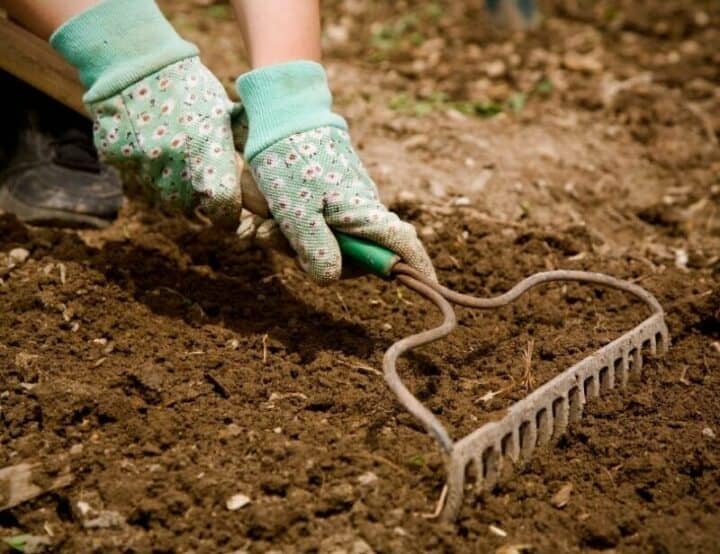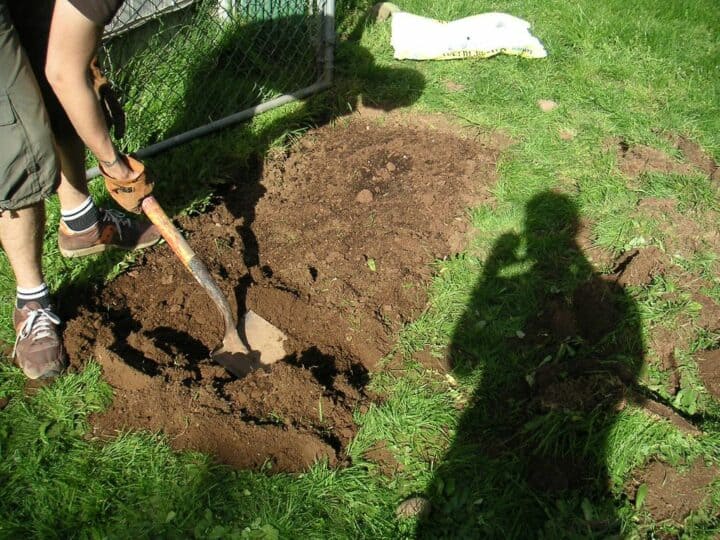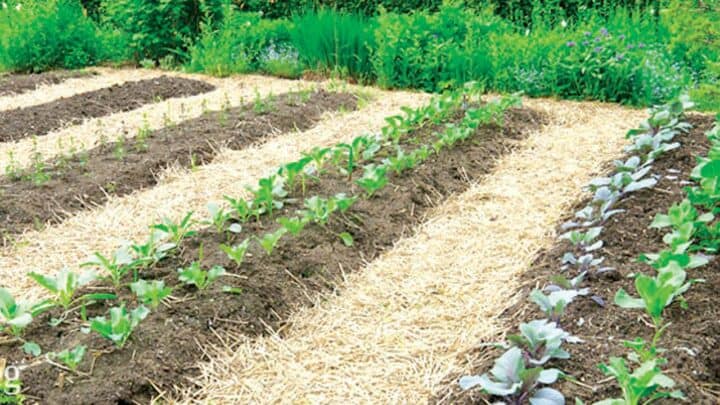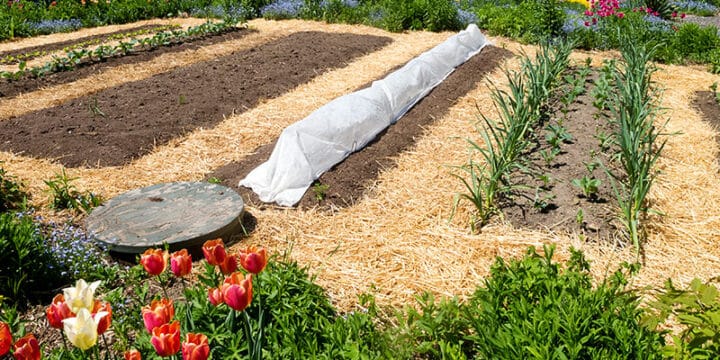Have you been looking to till your garden, but been unable to do so because you don’t have a tiller? If so, then you’re in the right place. Here you’ll find out how to till a garden without a tiller.
Tilling a garden without a tiller can be quite easy if you know which tools to use. There are many alternatives to tillers such as a wheel hoe, a mattock, a shovel, and a pitchfork among others. The alternative tools will help you till your garden manually.
In this article, you’ll get to know all about the different tools you can use, how to till a garden without a tiller and the best time to do so. Continue reading to get all the answers.
Till a garden without a tiller
Having the perfect fertilized soil in your garden is important if you want your garden to look lush and beautiful. To have healthy soil in your garden, tilling will be very important. However, some people overlook tilling because they don’t have a tiller at their disposal. However, these people don’t know that tilling can be done despite not having a tiller.
Tilling will help break down the soil of the garden while uprooting the grass and any unwanted seeds. It helps make the soil airy and healthy so that the plants and flowers can be sown. However, using tillers can cause harm to nature. Further, sometimes you might not want to invest money into buying a tiller. Earthworms do a great job of fertilizing the soil and deconstructing the soil so that it becomes healthy and airy. However, tillers often end up killing the worms.
It makes sense to spend some time and energy to till your garden soil without actually using a tiller. There are many ways to do that, and you will get to know those ways here.
How to till a garden without a tiller?
If you’re looking to know how to till a garden without a tiller, then the answer is by double digging. You’ll be working in rows when you’re manually hand-tilling a field. Some people prefer gardening in raised beds instead of fields. You’ll be able to manually till raised beds if you want to.
If you decide on tilling raised beds, you will have to work in squares instead of rows. The majority of raised bed gardeners will not till the soil, as raised beds do not require it. However, there could be instances when tilling might be desired, including overgrown or neglected raised beds. In that case, you will be working in squares instead of rows.
Gather the needed tools and supplies
You will require a few tools and other garden supplies. Before heading out to your garden, you should ensure that you’ve gathered these tools. Some of the tools you may include a shovel, digging, fork, a spade, wheelbarrow, garden rake, and a pair of work gloves to avoid blisters.
Organize the soil amendments
Before you begin tilling your garden, you should organize the soil amendments that you might be using. These will include compost, green sand, much, lime, peat, etc. Determine if the soil requires amendments and which ones are needed. You should assess the situation of the soil by conducting numerous soil tests around the garden. These tests should be conducted along the width, length, and center of the garden. This way, you’ll get a complete picture of the soil conditions. Further, you can also add fertilizer to improve the quality of the soil.
Determine the readiness of the soil
You’ll have to work under the right soil conditions. In case the soil is still frozen or not ready, you should reschedule the tilling. If there have been a few days of rain or if your garden is waterlogged, you should reschedule the tilling. You should want the soil to be in a workable condition and not be too muddy. You should try digging around 8-inch deep and grabbing a handful of soil. Squeeze the soil into a ball and then break it up. In case the soil easily falls apart, the soil is dry enough for you to till manually. In case the soil is loose, has a loamy makeup, and isn’t compacted, you shouldn’t till the garden.
Now comes the time to till the garden
Step 1: Start off with a good mulch
You’d want to add around an inch of compost to your garden while adding soil amendments. Spread the material over the entire garden area before you start digging. This ensures that the mulch gets mixed in with the soil and helps break it up while offering needed nutrients.
Step 2: Begin from one of the corners
You’ll want to begin digging at one side of the garden. You would want to work the entire length of the garden by digging a row around 10 to 12-inch wide and 12-inch deep. The depth and width will ensure that you’re covering the needed space for plants to grow.
Step 3: Displace the soil
You’ll pile the soil that you’ve removed on the upper side of the trench that you’re digging. Once you reach the opposite end of the garden, you should step down another 12-inches or so and begin digging another row. This time, you should place the soil from the second row and into the first row. You’ll want to start the 2nd row directly below the 1st row such that the ground is tilled.

Step 4: Continue to dig more rows
You’ll continue to work in this pattern and continue digging rows. Place the soil from the new row into the previous row, and do this until you’ve reached the last row. This row should be filled with the soil that you’ve removed from the first row. In case you’re working in a massive space, you should get a wheelbarrow to transfer the displaced soil.
Tools that can be used as alternatives to a Tiller to till the garden
1. Use a hoe for hand tilling
A manual hoe will not cost you much. Moreover, you will get to till the top layer of the soil effectively. However, keep in mind that this will only be for the top layer. You’ll have to use a lot of muscle power for hoeing deeper into the soil. Manual hoes are great if you want to loosen the soil for planting in the garden. You can manually till a small patch and use it to plant seeds, cover seeds, and more. You can use a push-pull hoe if you want to get rid of weeds and till a small amount of the top layer of the soil.
2. Shovel
Shovels are definitely great when you have to till your garden manually. How easy or hard the whole process is, will depend on your garden’s soil. If you’re on loose or sandy soil, a shovel will work really well. If you’re having clay or rocky soil, then a shovel might not be the best option. For such situations, a mattock-shovel combination will be perfect. You can simply loosen the soil using the mattock and then use the shovel to shovel the soil.

For saving the fertile top layer, you can use the double-digging method mentioned above. The method will keep the different layers of soil in order by putting the top layer in a wheelbarrow. It’ll be separated from the lower, less-fertile layer.
3. Pitchfork
Pitchforks work incredibly well if the soil is loose already. It will be very easy to turn and fork the mulch and organic matter into the soil. Unfortunately, it’ll be of no use if the soil is compacted or heavy
4. A mattock
A mattock is an exceptionally good gardening tool. You can use it to till the soil, slash weeds, dig holes, whack fence posts, remove grass, and more. It is simply a very versatile tool with numerous uses. With a mattock, you’ll be able to get a lot of power into what you’re doing. This is the case as you’re swinging it from above your head. If you’re not big or strong, getting the extra swing will be very helpful.
You can either go for short mattocks or long mattocks, or have one of both. The big mattock will come with a wooden handle. The wooden handle is very strong and will absorb shocks far better.
Meanwhile, small mattocks will be useful in getting weeds out as well as digging holes in the garden. They’re great for precision work where you do not have ample room to swing a full-sized mattock. It’ll be great for tilling soil as well. The best thing is, it doesn’t even involve much hard work. Further, it will help you achieve your tilling purpose without using a tiller.
5. Multi-prong hand tillers
Hand tillers are essentially like a rake, with the only difference being that they come with longer prongs. Moreover, they’re tougher and last long. You can use them as alternatives to traditional tillers, as they spike into the soil and then loosen it up. While you won’t be able to go as deep as with other tools, it’ll be great for loosening the top layer of the soil.
Important tips to remember when tilling garden soil
There are certain tips that you must keep in mind when you’re tilling manually without a tiller. Your garden soil will thrive if you use these tips.

- It isn’t necessary to hand till the entire garden space. You can simply choose to till the area where you’ll be planting seeds and then leave out the remaining area.
- When you’re digging up the dirt and transferring it into different rows, you should break up large chunks of dirt using a shovel or spade.
- Any rock or boulder that you find must be removed from the growing area.
- Only manually till the garden once a season. This way, you can avoid distributing earthworms or losing out on important soil nutrients.
- Soil that is hand tilled will be denser than machine tilled soil. This way, it’ll offer your plants a better home.
- Use a broad fork for further loosening the soil after you’ve dug a block.
- You should be sure that you’re raking and removing any rocks. Moreover, level the soil before you sow seeds and transplant plants.
- You shouldn’t add any fertilizers until the crops have started to bloom. If you’re using compost, you should not add fertilizers.
Conclusion
Thank you for reading. Hopefully, now you know a lot more about tilling and how to till a garden without a tiller. The best way to do that would be to manually till your garden using the double digging method. The best time to manually till your garden would be in early spring. The plan here would be to till around after the last frost of the spring. If possible, you can time the activity before new plants start growing. You can even do it right when new plants begin breaking through the soil.
